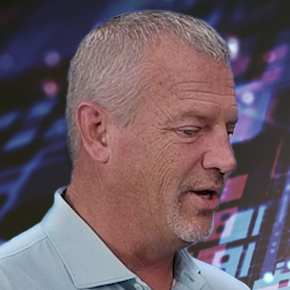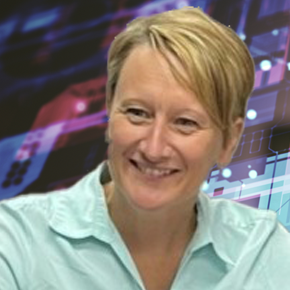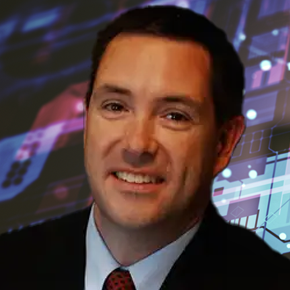February 14, 2024
How Design for Manufacturing saves $Millions

Transcript
What is Design for Manufacturing?
The market demands for product development today mean that the product design process must include steps for ensuring Design for Manufacturing. A modern program for Design for Manufacturing might include steps to analyze the component costs, the ease of assembly, and the associated manufacturing costs of each manufacturing process. When you add in optimization for your particular supply chain, and then layer on top of that your sustainability goals, that’s a hefty calculation to perform before a prototype even hits the factory floor.
A Case Study in Design for Manufacturing
This is why finding a digital solution for Design for Manufacture and holds such a huge potential for cost savings and the real-time productivity gains that ensure you hit your time-to-market goals.
Today we’re looking at a live case study of how one company simplified their Design for Manufacturing methodology through a digital twin solution.
Dana Corporation signed on with aPriori a year ago, and within a short period of time analyzed an astronomical number of parts resulting in lower cost and more insight in the design stage. Here to talk to me about this is Terry Hammer, the Vice President of Engineering for Dana Light Vehicle Systems. Terry Hammer is the hero who led Dana Corporation into more savings and a streamlined process for Design for Manufacturing in their light vehicle drive systems. I started by asking him to introduce the company, his role there, and how they began their aPriori journey.
Terry Hammer: I’m Terry Hammer. I’m the Vice President of engineering for the Light Vehicle Drive systems part of Dana Corporation. We are based in automotive sector, largely light truck, heavy truck. We make axles, prop shafts, transmission, e-drive systems, and motors. We say we move what matters.
Leah Archibald: And your role specifically at Dana, what are you in charge of managing day-to-day?
Terry Hammer: My role is product development. It is taking customer RFQ, proposing a product to match that requirement, designing to those targets, testing, getting it to production. We really do cradle to grave. It is concept to end of life, which includes service requirements and everything.
Leah Archibald: You started engaging with aPriori about a year ago. What was the problem that you were trying to solve when you went to investigate digital transformation, digital thread solution?
Terry Hammer: It was really Design for Manufacturing. We started with the basic questions.
Questions for Design for Manufacturing Analysis:
- What’s core or non-core to the business?
- What are we going to make or buy strategically?
- In what regions of the world do you want to buy that in?
Design to Cost
Terry Hammer: We really talk about cost when we talk about Design for Manufacturing. And trying to take that knowledge from the manufacturing base and putting it in the product and the design engineer’s hands, so that they understand the relationship between what they put in the drawing, what they put in the specs, and the dollar figure associated to it.
Leah Archibald: Now previously, did you have different systems for Design to Cost and Design for Manufacturing?
Terry Hammer: Dana, because it’s a 120-year-old company, we used to have what we call design masters, design guidelines, design checklist. And it was based on the fact that basically, the core manufacturing processes have been around for a very long time. Now, with the change to electrified vehicles, now the product portfolio is reshaping. So instead of having what we would call the old core system, we need a new way to determine Design for Manufacturing. Because what we make tomorrow is not going to look like what we make today. So it was really about trying to take that knowledge of the EV world and bring it into the concept selection for the EV powertrain.
Leah Archibald: During the timeframe you’ve been doing this initiative, there have been all sorts of supply chain shortages. So it’s been a lot on your plate, not only designing for purpose, but sourcing for those designs.
Terry Hammer: Oh, very much so. I mean, you start off with the uncertainty in the OEM population. There are a lot of startup companies, and a lot of people trying to do it differently to create value, whether it be the way they’re going to approach their car architecture or their drive line or their battery consumption plan. All of those factors are being manipulated largely by the OEMs. And then you’re trying to give them the best solution to match those input factors in them. And I’ll say, what’s going to be the best approach is still uncertain because of the amount of change. So what’s the most efficient drive line? What’s the most efficient motor combination? Do I need a single speed, or two speed, or three speed transmission, or even potentially a direct drive?
4 Steps to Gaining Market Share with Design for Manufacturing
- Predict: What is the market going to ask for?
- Determine: What various ways can you provide solutions against those requirements?
- Get it right the first time.
- Get to market fast.
Leah Archibald: If you’ve got an insight software like aPriori installed, it’s speeding your time to market because you’re getting the DFM insights before you even do a prototype, and it’s bringing down your cost at the same time. So it’s hitting at both angles.
Terry Hammer: Yeah, I mean, in our business, a round of development is roughly $3 million per component development cycle. So when you think of it, if I do it for 3 million bucks and then somebody comes in and says, “Oh, it doesn’t match the manufacturing process,” or “That concept’s too expensive,” that’s 3 million bucks you threw away. Because you’ve got to do it again.
Leah Archibald: So have you saved $3 million in the past year since you implemented aPriori?
ROI: 1-Year Payback / Zero Net Staffing
Terry Hammer: You know, we started off really with a two-pronged approach. The first was go showing ROI on current product. We analyzed about $100 million dollars of spend and we’ve shown 8% opportunity, which is a pretty good number. We’ve actually been able to realize about half of that. So 4 million out of 10 million. So 4% return.
Leah Archibald: That’s a payback for the software within the first year.
Terry Hammer: And it not only paid for the software, it paid for the people that we set aside to work on that software. So it truly paid for not only the software, but the personnel cost. We’ve definitely driven to what we call the cost function relationship, which is different ways to approach a problem, based on manufacturing process difference.
I’ll try to give you a five-second example of a part assembly: cost versus function. We took a part lock and modeled it through different processes. First we looked at metal technology. Great cost, but poor function. Then we went to forging, forging, and machining. That’s the highest cost, but guaranteed function. Then we went to fine blanking. Cost comes down, function maybe there’s a little risk. So then we did fine blanking plus key feature machining and said, okay, that is the best cost function relationship to ensure performance, matching your process. So it’s really looking at: how many different ways can you attack the problem from a manufacturing standpoint.
Leah Archibald: And your design engineer, because he has aPriori on his system, can do that all in a day on a computer screen without any part hitting a factory floor?
Terry Hammer: Oh yeah. The 3D is still flexible enough. You can change the way your tolerance is, or change your material specs based upon the process you’re going to use.
Getting Adoption for a Desing for Manufacturing Initiative
Leah Archibald: You’re not even a year in to your initiative, and I know it takes as much organizational change as it does the right software. Because the software can be pretty plug-and-play, but then getting your team on board often takes longer. What is your experience with that?
Terry Hammer: My approach is the lighthouse effect, which is to show value through key examples on both the VAVE side and the Design for Manufacturing side. And as soon as people start to see the value, like with the park lock example I talked earlier, then people say: “Okay, I get the method. I understand the process. I understand how much money it was worth. I understand how fast it happened. I’m in.”
So lighthouses are key, both for the users as well as the executive team.
Success managers also have value. On the applied services side, Dana hired one of aPriori’s Applied Services guys for a year, and basically pulled him into the organization and said: show us how to do it. So we jump started our ROI through applied services as well as the success management team. So that was important.
Leah Archibald: So you had a dedicated person, as a full-time mind, showing everyone how to use the software, troubleshooting issues, and making sure that you’re delivering that value.
Terry Hammer: Yes. We basically prioritized the key digital factors with what we make: stampings, forgings, castings, and then the machining or weldments of those. So prioritizing the factories that are important to you, and aPriori is really key to getting value fast.







